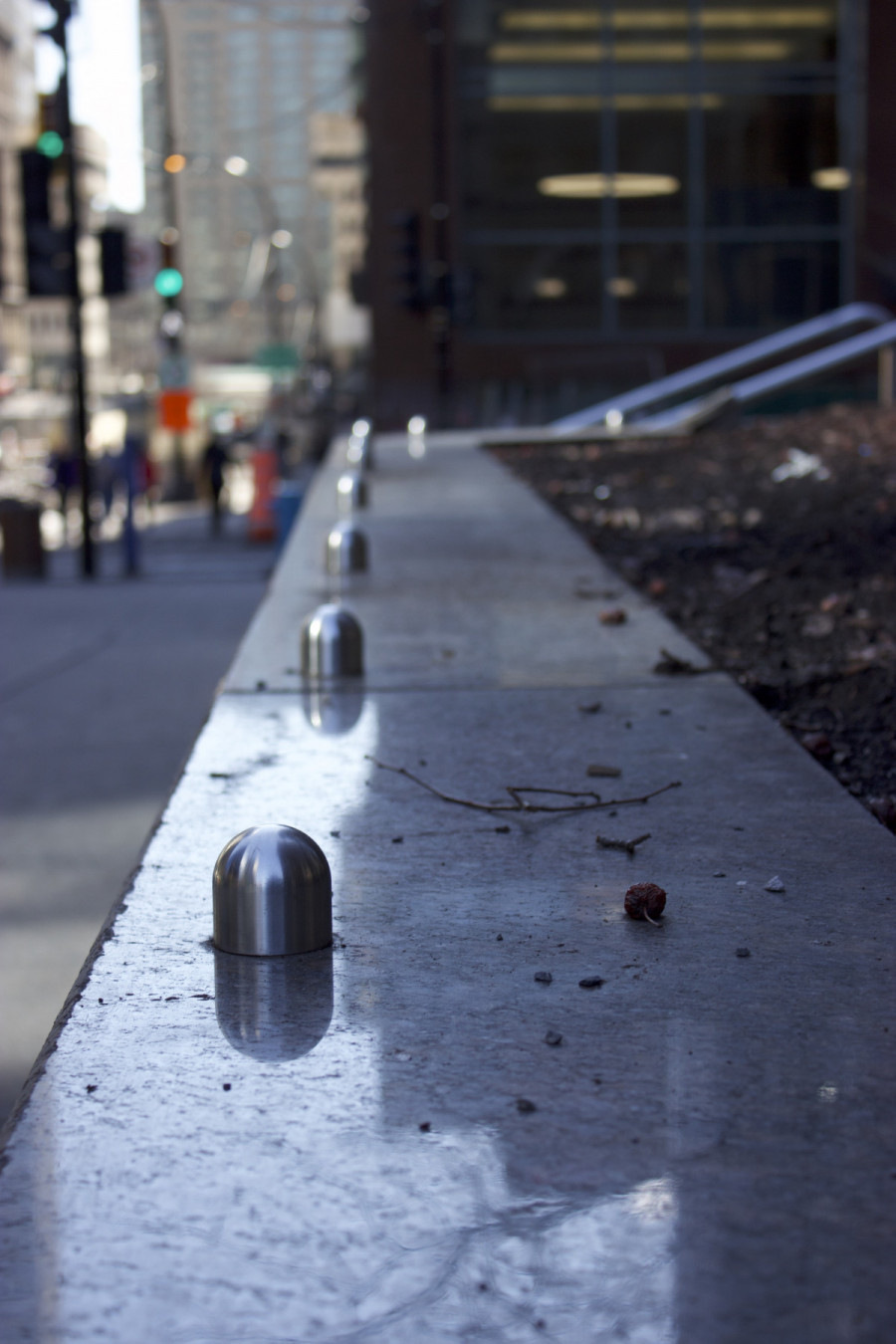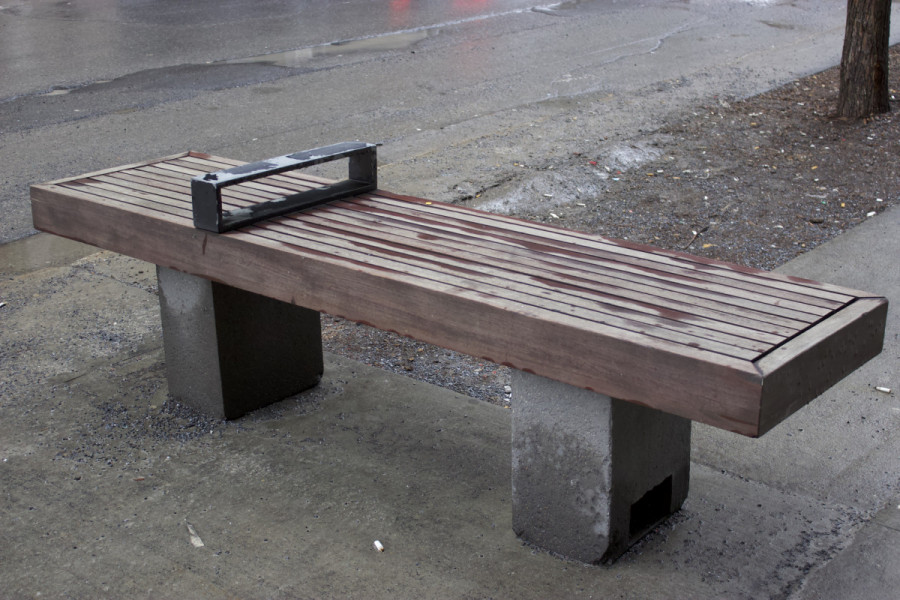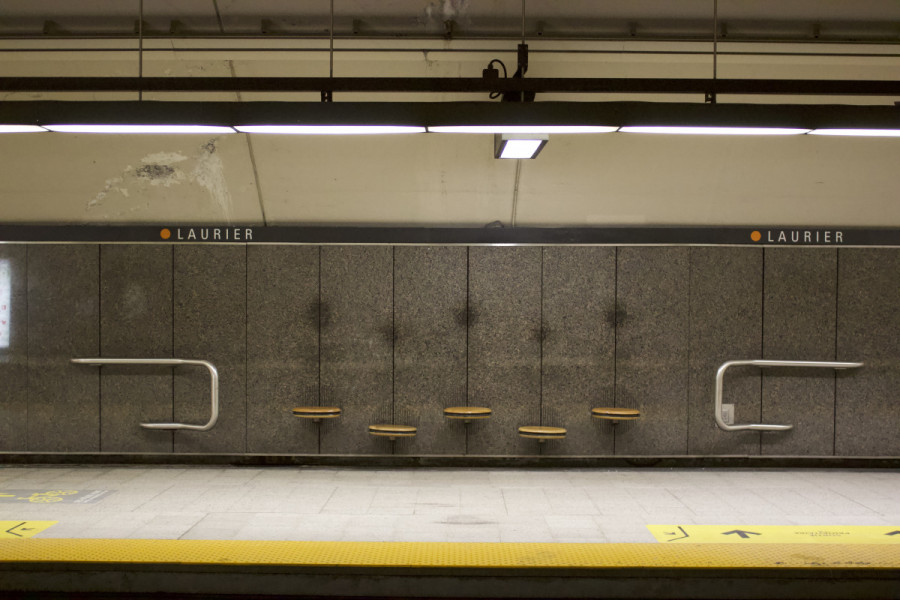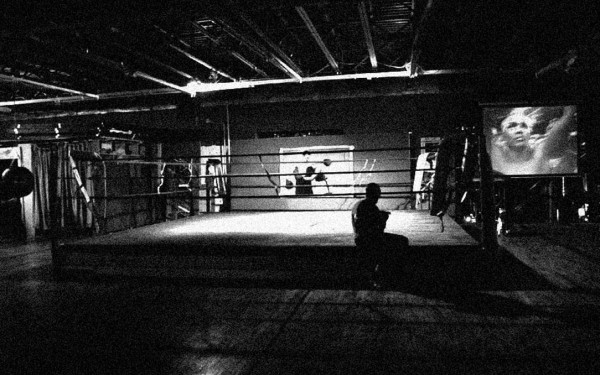Controlling public space: When does architecture become hostile?
Cities often implement hostile architecture to deter what they deem as unwanted behaviours
From the Notre-Dame Basilica to St. Joseph's Oratory, Montreal is home to many architectural masterpieces. However, all across Quebec’s largest metropolis, through its streets and in its parks, hostile architecture is integrated into the city's urban design.
Hostile architecture, or defensive design, can be defined as measures put in place to prevent unwanted use of public spaces. Whether it be armrests in the middle of benches, rocky or uneven pavement, unusual individual seat designs, or even the lack of public amenities, defensive design is a way of policing space. These features, or lack thereof, are meant to make public spaces uncomfortable for long periods of time and limit what some city officials consider anti-social or undesired behaviours. It’s sewn right into Montreal’s urban design, directly targeting vulnerable members of the community, and begs the question: Are public spaces truly for all members of the public?
Defensive design is often masked by trendy architectural shapes or even buried under false intentions to make spaces more accessible. This is seen when city officials say leaning rest stops are more accessible for the elderly, or armrests on benches are there to help with mobility. While at times these features can enhance accessibility, the intention behind the design is what will make it either inclusionary or exclusionary. Armrests that are too low do not help with mobility issues, nor do they have to be in the centre of benches. This sort of design is fueled by the direct intention to drive vulnerable members of the public and marginalized groups out of these spaces.

Adri Stark, senior project manager for Park People, explained the unhoused population, among other marginalized groups, is most valuable to the dangers of hostile architecture.
“Defensive design in parks is harmful because it can push unhoused community members into more precarious or dangerous places,” she said. “For example, if spikes are suddenly installed on a park ledge that a person usually relies on for sleeping, they may be forced to seek shelter in more isolated spaces, like back alleys, where research shows they can be exposed to increased safety risks.” Harassment, sexual assault, verbal abuse, among other risks, are some of the dangers that can be more prevalent.
Stark added that beyond the physical dangers defensive design poses on unhoused community members, it can also be psychologically harmful since “it shows a lack of respect for their basic well-being.”
Founder of DefensiveTO and McGill planning, policy, and design PhD student Cara Chellew said defensive design can send a message of who belongs, which in turn is part of the larger systemic problem.
“When you use design [...] and make it more uncomfortable to be in spaces, especially [for] people who are experiencing homelessness, it removes them as who we see as part of the public,” she said. “We can’t address issues like poverty or urban inequality if we don’t see the problem.”
Chellew explained that while some spaces are intentionally designed with certain groups in mind, such as playgrounds for children, there is no need to send a message of exclusion.
“When you use design [...] and make it more uncomfortable to be in spaces, especially [for] people who are experiencing homelessness, it removes them as who we see as part of the public.” — Cara Chellew
“Not all spaces are going to be for everyone, but we don’t need to be putting in infrastructures that are going to exclude people,” she said. “Everyone should be allowed to be in public with other people and experience all the benefits that happen when you see people, are seen, are part of the public. These are all important things.”
She explained a large part of defensive design is the lack of amenities in public spaces which discourages the public from staying too long. “They might not have public washrooms, they might have pavilions that don’t have an overhang for people to go seek shelter from the rain,” she said.
In making a space uncomfortable for some, Chellew emphasized that it ultimately makes it disagreeable for all. “The lack of these resources affects seniors, families, and people with disabilities. [...] In creating a more defensive or hostile space for some, it actually affects everyone and disproportionately so for people who are more vulnerable.”

She added that intersecting identities need to be taken into account when thinking about inclusive spaces. When considering mobility and accessibility when designing urban spaces, Chellew used an example of unhoused community members who can at the same time be the ones with disabilities. Designs in urban planning must be guided by community needs and community desires, she explained.
Dr. Ipek Türeli, Canada’s research chair in architectures of spatial justice and associate Professor at McGill, explained control over public space is exerted by a select group. Türeli likened it to controversial statues and monuments that have recently been called to be removed.
“They claim public spaces, but they have been installed by the privileged few,” she said. “We usually see that it's the powerful few versus everyone.”
Türeli said defensive design can be larger than deficiencies in urban furniture, and that it can be analyzed as a whole concept. Buildings and facilities can be equally as hostile if entrances communicate difficulty in accessibility, or if a purchase is required to enter, she explained.
“I don’t think we have enough reasons to feel good about ourselves,” Türeli said on inclusive spaces in Montreal. She explained urban designers have the responsibility to bring the voices of those who are not represented to the table when making decisions on public space. According to Türeli, the step forward towards inclusive spaces is diversity in designers.
“If design professionals come from diverse backgrounds and come from communities who experienced issues in access, then they will prioritize these experiences,” she said.
Türeli pointed to a larger picture when talking about the issues of defensive design. She believes it starts with education and access to urban design education. “The key is really to diversify our designers [and] design education, [and] who has access to design education and to the profession."
This article originally appeared in The Sidewalk Issue, published April 5, 2022.


_600_832_s.png)

__600_375_90_s_c1.jpg)
1_600_375_90_s_c1.jpg)
